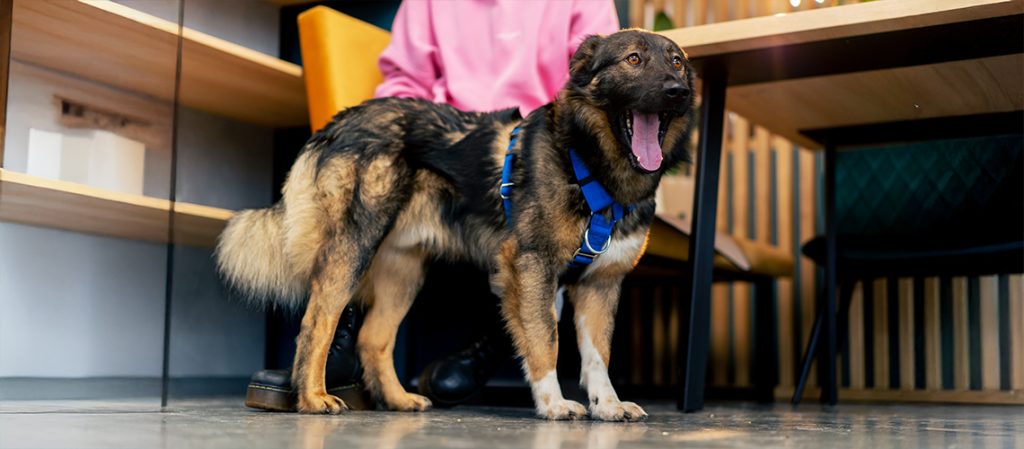Dogs, much like humans, can display a wide range of behaviors. Some of these behaviors might make dog owners wonder, can dogs have autism or something similar? Autism in humans is a complex developmental condition, and while the official diagnosis of autism in dogs does not exist, there are signs of “autism-like behavior in dogs” that may suggest something similar. So, let’s dive in to understand these behaviors, what might cause them, and how you can help your dog if it exhibits signs of canine dysfunctional behavior.
What is Autism?
Autism is a developmental disorder primarily diagnosed in humans, characterized by challenges in social interactions, communication, and repetitive behaviors. While humans can be diagnosed with autism through a comprehensive evaluation, it’s important to note that dogs cannot be formally diagnosed with this condition. However, dogs exhibiting certain repetitive behaviors or antisocial behaviors can lead dog owners to draw parallels to autism in humans.
Can Dogs Have Autism?
Although the official diagnosis of autism in dogs does not exist, some dogs may show autism-like behaviors. These behaviors might include avoiding social interactions, showing little interest in playing, engaging in repetitive behaviors, or reacting unusually to stimuli, such as noises, people, or changes in their environment.
When dogs exhibit these traits, they may suffer from what is called “canine dysfunctional behavior.” This term is often used to describe dogs that exhibit similar symptoms to autism in humans. It is important to note that, while there’s no medical confirmation that dogs can have autism, some of these behaviors can point to underlying medical conditions or environmental factors affecting your dog’s behavior.
If your dog displays unusual traits like these, connecting with an animal behaviorist or dog trainer may be a good next step. They can guide you through understanding your dog’s behavior and finding ways to help manage it.
If you believe your dog provides emotional support, consider getting an ESA certification to ensure you have the legal protection you need for housing. Learn more about getting your Emotional Support Animal letter here.
Signs of Autism-Like Behavior in Dogs
There are several key signs of autism-like behaviors in dogs that dog owners should look out for. These behaviors often resemble symptoms found in humans with autism:
- Repetitive behaviors: Dogs engaging in repetitive behaviors, such as tail-chasing, spinning in circles, or obsessively licking objects or themselves, may be exhibiting signs of canine dysfunctional behavior.
- Avoidance of social interactions: Dogs that shy away from human interaction, avoid eye contact, or seem uninterested in playing with other animals may be displaying antisocial behaviors.
- Unusual reactions to stimuli: Some dogs may react unusually to sounds, light, or movement. They may become anxious or fearful in response to normal stimuli, which could be a sign that something is wrong.
- Lack of interest in activities: Dogs exhibiting a lack of enthusiasm for play or exercise, or who seem disconnected from their environment, may be showing signs of autism-like behavior in dogs.
If you notice these signs in your dog, it’s a good idea to seek guidance from a veterinarian or an animal behaviorist. They can help rule out other medical conditions and provide support in managing your dog’s behavior.
Does your dog bring you emotional comfort and help you through tough times? Your pet might qualify as an Emotional Support Animal. Find out how to get your ESA letter today here.
Causes of Autism-Like Behavior in Dogs
While the exact causes of canine dysfunctional behavior are not fully understood, experts believe that a combination of genetic and environmental factors may play a role. For instance, some dogs might be predisposed to displaying these behaviors due to their genetics, while others may develop them because of their upbringing or experiences.
Here are a few factors that could contribute to these behaviors in dogs:
- Genetic predisposition: Certain dog breeds may be more likely to exhibit autism-like behaviors. Studies suggest that certain breeds, such as Bull Terriers and Doberman Pinschers, are more prone to engaging in repetitive behaviors.
- Environmental factors: Stressful or unstable environments can exacerbate behaviors that resemble autism in dogs. For example, dogs that are not properly socialized as puppies or that have experienced trauma may be more likely to exhibit these traits.
- Medical conditions: It is important to note that some medical conditions, such as neurological disorders, can cause similar symptoms in dogs. Always consult a veterinarian to rule out any underlying health issues.
Identifying the causes of your dog’s behavior is the first step in providing appropriate care and improving your dog’s quality of life. An animal behaviorist or dog trainer can help create a plan to address these behaviors and ensure your dog feels safe and understood.
Thinking of getting an Emotional Support Animal? Your dog might already be providing you with emotional support. Get your ESA letter quickly and easily here.
Helping Dogs with Autism-Like Behaviors
If your dog is exhibiting signs of autism-like behaviors, there are several steps you can take to help manage these behaviors and provide a more comfortable environment for your dog.
- Positive reinforcement training: Using positive reinforcement, such as treats and praise, can encourage good behavior in dogs. A dog trainer experienced in working with animals that have behavioral challenges can be very helpful in this process.
- Create a safe space: Just like humans, dogs need a place where they feel safe and comfortable. Providing a quiet, designated area for your dog to retreat to can help reduce anxiety and give your dog a sense of security.
- Engage your dog with puzzle toys: Dogs that display repetitive behaviors often benefit from mental stimulation. Puzzle toys can keep them engaged and focused, reducing unwanted behaviors by redirecting their energy.
- Regular exercise: Ensuring your dog gets regular physical exercise is essential for maintaining its overall health and well-being. Daily walks and playtime can help alleviate anxiety and prevent destructive behaviors.
By providing your dog with structure, exercise, and mental stimulation, you can help manage autism-like behaviors. Working with an animal behaviorist can also help guide you through the process of addressing these behaviors and creating a plan that works for your dog.
Your dog may already be providing you with the emotional support you need. If so, consider getting an ESA letter to ensure your pet is protected. Get started here.
Conclusion
While the diagnosis of autism in dogs is not recognized, dogs can display behaviors similar to those seen in humans with autism. It is essential to remember that many factors, including genetics, environment, and possible medical conditions, can contribute to these behaviors. Working with a veterinarian, animal behaviorist, or dog trainer is key to identifying the cause and managing these behaviors effectively.
If your dog provides you with comfort and emotional support, they may qualify as an Emotional Support Animal, helping ensure you and your pet are protected under the Fair Housing Act. Remember, your furry friend’s well-being is just as important as yours. Take the necessary steps to ensure both you and your dog can thrive together.






